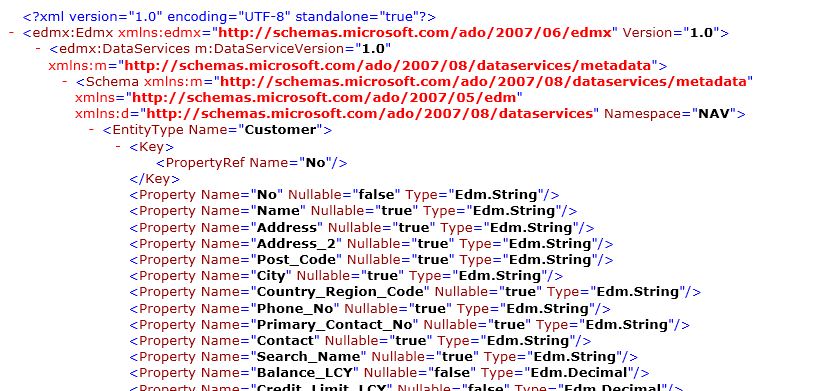Use OData to Return and Obtain a Service Metadata Document
The Entity Data Model (EDM) is a specification for defining the data that is used by applications that are built on the Entity Framework. EDMX is an XML-based file format that is the packaging format for the service metadata of a data service. When you interact with an OData service that is published from Business Central, you can request EDM-based proxies and then use tools such as LINQ to create data access logic. LINQ is a programming model that developers can use to query data from a variety of data sources, including OData. For more information, see LINQ (Language-Integrated Query)
The Business Central implementation of EDM follows the .NET 4.0 WCF Data Service Framework implementation.
The following guidelines have been implemented for EDM.
Business Central field names are mapped to EDMX property names by replacing spaces with underscores.
Primary key fields in tables are automatically defined as properties in the service metadata document even if they are not exposed on a page as controls.
Obtain a service metadata (EDMX) document
You can obtain service metadata documents for either page or query web services. This example uses a page web service. Register and publish a page web service by using the Business Central Web client. See Publishing a Web Service..
Start a supported web browser, such as Microsoft Edge. In the Address field, enter a URI in this format:
https://<Server>:<WebServicePort>/<ServerInstance>/ODataV4/$metadataIf Business Central Server is running on the local computer and is using the default Business Central Server instance and OData port, then the address is:
https://localhost:7048/<server instance>/ODataV4/$metadataThe browser should now show the complete metadata for the page web service that you have published. The beginning of this document looks like this:
